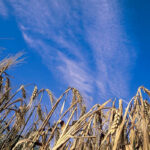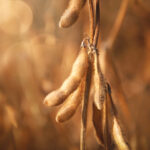Tag Archives Science Notes

Plant mutation research aimed at predictability
Science Notes: More accurate breeding could result from more predictable mutations

Plant drought tolerance relates to pore openings
Science Notes: Molecule associated with relaxation controls the size of pores and water loss
Scientists look to get more mileage out of plant enzymes
Science Notes: A way has been found to evaluate how long a given enzyme lasts

Higher protein levels suggested for dairy calf starter
Science Notes: University study looks to find a winning combination

Drones and AI detect soybean maturity with high accuracy
Science notes: The technology could greatly reduce the need for boots on the ground

When resistance genes become a secret door
Science Notes: Genetic mechanism that produces oat blight discovered

Density, not diversity key to northern forest carbon sequestration
Science Notes: Forests can play a crucial role in mitigating climate change

Uneven farm productivity report shows COVID impacts
Science Notes: Some countries more vulnerable to pandemic-scale outbreaks than others.
Enzyme helps grafting among different plant species
Science Notes: Tobacco plant maintains grafts among many scions and rootstocks

Milkweed key to building monarch butterfly numbers
Science Notes: Monarchs appear to successfully migrate, but there’s concern about declining numbers
